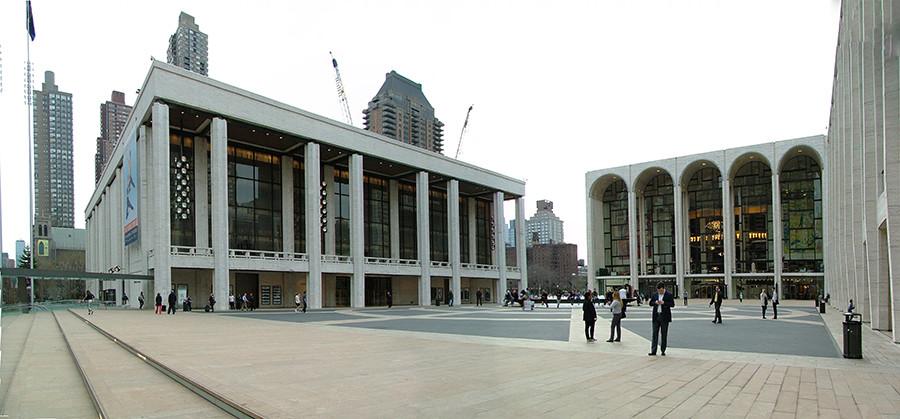Lincoln Center abandoned as NYFW center
Fashion Week is moving from Lincoln Center (shown) to Skylight at Moynihan Station and Skylight Clarkson Square.
September 23, 2015
If you were to walk by 10 Lincoln Center Plaza during the first weeks of September at any point over the last five years, you would be greeted by a truly unique spectacle. More commonly known as a home for the performing arts, 10 Lincoln Center Plaza has played host to countless designers, buyers and models as the centralized venue for New York Fashion Week. But this year, as fashion fanatics flocked to the city from across the globe, walking past by 10 Lincoln Center Plaza produced an entirely different scene — a quiet hum of vacancy in comparison to the fervor of activity seen in years past.
As an increasing number of brands have become disenchanted with Lincoln Center’s commercial homogeneity, they are now dispersing to an array of venues like Vanderbilt Hall, Art Beam and Skylight Modern. Centralization has been supplanted by stark individualism. While stylists and photographers alike spend more time in traffic than at actual shows it causes people to question why there has been such a sudden departure from a center-stage like Lincoln Center.
The answer lies with show organizer and media giant William Morris Endeavor and its subsidiary, IMG — a partnership established in 2013. This entertainment giant has quietly been at the helm of not only the departure from Lincoln Center, but also a larger rebranding of “New York Fashion Week: the Shows” as a whole. With the recent acquisition of chief rival Made Fashion Week at MILK, WME/IMG has just this year began to exert its influence over the image of Fashion Week. As New York Fashion Week has grown from a niche event held for those within the trade to an international phenomenon, fashion itself has transformed into an independent form of entertainment.
With fashion’s mainstream significance as entertainment, Fashion Week itself has adopted a new look around the globe — one that is less overtly commercial, instead focusing on the creativity and talent of designers themselves. This year marks not only the beginning of decentralization for Fashion Week, but also an abandonment of the corporate sponsorships that have been so historically central to its image.
An event commonly known in the past as Mercedes-Benz Fashion week has now changed its title to “New York Fashion Week: The Shows.” After five years spent in Lincoln Center, WME/IMG attempted to relocate shows to two main locations that they control: Skylight at Moynihan Station and Skylight Clarkson Square in SoHo. But despite the company’s dominance in the industry, only a third of designers agreed to show in their venues.
The fact is designers simply do not want to show at the same venues in the name of brand recognition. With the introduction of massive consumer accessibility via social media and live streaming, designers must work harder to establish their brand as unique and desirable. So as designers scatter uptown and downtown, from Brooklyn to the Upper East Side, the future of Fashion Week remains unclear. But one thing is guaranteed, this global media phenomenon can only continue to expand its already massive scope and influence.


























































































































































